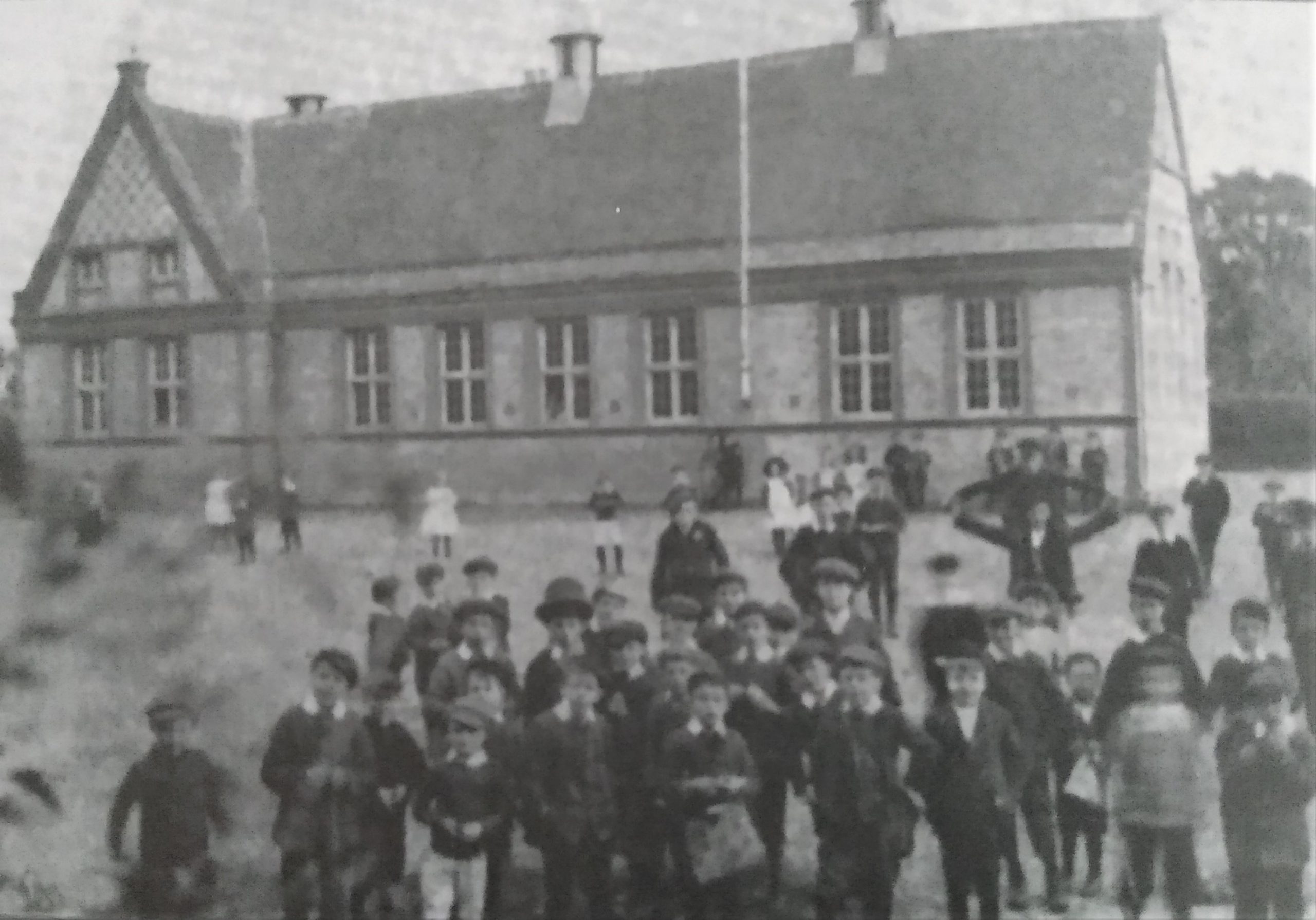Burnt Oak School
This would have been the main school for youngsters from East Bergholt and the surrounding area age 5-15 and could accommodate around 50 pupils in mixed classrooms with seperate playgrounds for boys and girls.
- 2
- Built in 1830 originally an all boys school, girls moved over from The Lamb school in 1876.
Details
Life at school in the early 20 century was certainly interesting and many accounts of this time was published in a book ‘100 years of East Bergholt’ by the East Bergholt Society (copies of this 60 page booklet are available from the East Bergholt Society , £5.00 inc p&p).
Of course at the beginning, everyone walked to school as it wasn’t until the mid 40’s that there was a school bus.
There are a few personal accounts of the walk, over the field by the Donkey track, or tramping over Gandish Fields to school in thick button boots, carrying dinner of bread and cheese, or a much longer walk from East End, a mile and a half which at age 5 was a long walk each way especially after a long day, walking the Straight Road when it was nothing more than a glorified cart track full of potholes, they had no bicycles.
Children were summoned to school by the tolling of a bell at 9am and every morning would start with assembly. Then the children would go to their class rooms and recite their tables, and then the teacher would fire questions around the class.
In the early days the girls had a separate playground to the boys but mixed in the classrooms. In the infant class there were little sand trays to write and draw in, counting was done with beads on a stand and as time went on slates and slate pencils for writing were introduced. They studied all the usual subjects, arithmetic, history, letter writing, geography and religious teaching and you could leave school at the age of 14, or if you had passed the labour exams you could leave from the age of 12!
Up until 1901 the children would celebrate Empire day on May 24th (Queen Victoria’s birthday), they would march around the playground and salute the Union Jack, it was a half day at school on Empire Day and once a year the school had an Exhibition Day when parents were invited to hear the children recite poetry and stories.
In those early days education was rather different as you would only go up a class once you had passed an exam, and some of the teachers left their mark. Miss Edwards, or better known as Little Miss Edwards as she was only about 5ft, Miss Moore who ran three classes was 6ft 1 and as thin as a reed. Miss Neville was a big busty women with pince-nez glasses, she taught standard four and standard five, as standard six was taught by the Headmaster Mr Turnball.
Mr Turnball, a short dapper man with a white pointed beard, a strict disciplinarian who would give a clip around the ear if things were not up to standard. His kneehole desk was on a raised platform giving him a better view of the class as well as a partial view of the adjacent class. He was also the church organist and choirmaster and a prayer and hymn were sung every morning by the top class, the doors each side were opened and the hymn words displayed on the blackboards. He demanded strict behaviour as there was always the threat of the cain which was on show on the front of his desk and was often used.
When Mr Turnball retired he was replaced by a Mr Girling, a much younger man who made many changes, and certainly not as strict as his predecessor, he also divided the top 2 classes into two houses, Constable and Lambe.
Another head knicknamed ‘Crusty’ would take the boys to the Cattawade school for woodwork once a week. A vicious man with a big crop of grey hair, he would throw things at you from lumps of wood, hammers, basically anything to had to hand if the children did or said something wrong.
Many of the teachers spent their whole teaching life at Burnt Oak School so very different from today, from the start of their teaching career to their retirement, everyone knew them, and many children had fond memories of them.
Arrangements were made to use the meadow next to the school at certain times for games, mainly football (cowpats on the field were a hazard), but it made a change from all the other exercises done on the gravel surfaced playground.
In the summer dinner break lasted two hours so the children would often take themselves down to Flatford to eat their lunches and paddle in the river.
During WW2 and because of the overspill of children coming in from London, the Lambs School had a new lease of life for a while for evacuees and also served as the village library.
The new modern school on Heath Road opened in 1957 taking all the older school, but it remained as a primary school until 1966 when it was replaced by the present primary school in Hadleigh Road and Burnt Oak School was demolished.
Please do get in touch if you have any additional information and can add to this story.
- 2
- Built in 1830 originally an all boys school, girls moved over from The Lamb school in 1876.

